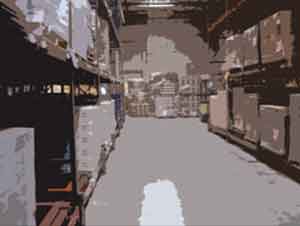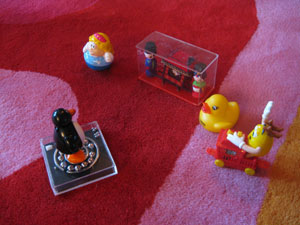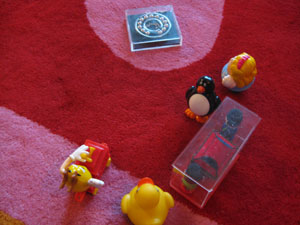Organizational Behavior
| | IntroductionOrganizational Behavior (OB) is the study and application of knowledge about how people, individuals, and groups act in organizations. It does this by taking a system approach. That is, it interprets people-organization relationships in terms of the whole person, whole group, whole organization, and whole social system. Its purpose is to build better relationships by achieving human objectives, organizational objectives, and social objectives.As you can see from the definition above, organizational behavior encompasses a wide range of topics, such as human behavior, change, leadership, teams, etc. Since many of these topics are covered elsewhere in the leadership guide, this paper will focus on a few parts of OB: elements, models, social systems, OD, work life, action learning, and change. Elements of Organizational BehaviorThe organization's base rests on management's philosophy, values, vision and goals. This in turn drives the organizational culture which is composed of the formal organization, informal organization, and the social environment. The culture determines the type of leadership, communication, and group dynamics within the organization. The workers perceive this as the quality of work life which directs their degree of motivation. The final outcome are performance, individual satisfaction, and personal growth and development. All these elements combine to build the model or framework that the organization operates from.Models of Organizational BehaviorThere are four major models or frameworks that organizations operate out of:
The first model, autocratic, has its roots in the industrial revolution. The managers of this type of organization operate out of McGregor's Theory X. The next three models begin to build on McGregor's Theory Y. They have each evolved over a period of time and there is no one "best" model. The collegial model should not be thought as the last or best model, but the beginning of a new model or paradigm.

Social Systems, Culture, and IndividualizationA social system is a complex set of human relationships interacting in many ways. Within an organization, the social system includes all the people in it and their relationships to each other and to the outside world. The behavior of one member can have an impact, either directly or indirectly, on the behavior of others. Also, the social system does not have boundaries...it exchanges goods, ideas, culture, etc. with the environment around it.Culture is the conventional behavior of a society that encompasses beliefs, customs, knowledge, and practices. It influences human behavior, even though it seldom enters into their conscious thought. People depend on culture as it gives them stability, security, understanding, and the ability to respond to a given situation. This is why people fear change. They fear the system will become unstable, their security will be lost, they will not understand the new process, and they will not know how to respond to the new situations. Individualization is when employees successfully exert influence on the social system by challenging the culture. Impact Of IndividualizationThe chart above (Schein, 1968) shows how individualization affects different organizations:
Organization DevelopmentOrganization Development (OD) is the systematic application of behavioral science knowledge at various levels, such as group, inter-group, organization, etc., to bring about planned change. Its objectives is a higher quality of work-life, productivity, adaptability, and effectiveness. It accomplishes this by changing attitudes, behaviors, values, strategies, procedures, and structures so that the organization can adapt to competitive actions, technological advances, and the fast pace of change within the environment.There are seven characteristics of OD:

Quality of Work LifeQuality of Work Life (QWL) is the favorableness or unfavorableness of the job environment. Its purpose is to develop jobs and working conditions that are excellent for both the employees and the organization. One of the ways of accomplishing QWL is through job design. Some of the options available for improving job design are:
Job enrichment, on the other hand, adds additional motivators. It adds depth to the job - more control, responsibility, and discretion to how the job is performed. This gives higher order needs to the employee, as opposed to job enlargement which simply gives more variety. The chart below (Cunningham & Eberle, 1990) illustrates the differences: Job Enrichment and Job PerformanceThe benefits of enriching jobs include:
Action LearningAn unheralded British academic was invited to try out his theories in Belgium -- it led to an upturn in the Belgian economy. "Unless your ideas are ridiculed by experts they are worth nothing," says the British academic Reg Revans, creator of action learning [L = P + Q] -- learning occurs through a combination of programmed knowledge (P) and the ability to ask insightful questions (Q).Action learning has been widely used in Europe for combining formal management training with learning from experience. A typical program is conducted over a period of 6 to 9 months. Teams of learners with diverse backgrounds conduct field projects on complex organizational problems requiring use of skills learned in formal training sessions. The learning teams then meet periodically with a skilled instructor to discuss, analyze, and learn from their experiences. Revans basis his learning method on a theory called "System Beta," in that the learning process should closely approximate the "scientific method." The model is cyclical - you proceed through the steps and when you reach the last step you relate the analysis to the original hypothesis and if need be, start the process again. The six steps are:
Revans suggest that all human learning at the individual level occurs through this process. Note that it covers what Jim Stewart (Managing Change Through Training and Development, 1991) calls the levels of existence:
ChangeIn its simplest form, discontinuity in the work place is "change."Our prefrontal cortex is similar to the RAM memory in a PC -- it is fast and agile computational device that is able to hold multiple threads of logic at once so that we can perform fast calculations. However it has its limits in that it can only hold a handful of concepts at once. In addition, it burns lots of high energy glucose (blood sugar), which is expensive for the body to produce. Thus when given lots of information, such as when a change is required, it has a tendency to overload and being directly linked to the amygdala (the emotional center of the brain) that controls our fight-or-flight response, it can cause severe physical and psychological discomfort. Our prefrontal cortex is marvelous for insight when not overloaded. But for normal everyday use, our brain prefers to run off its "hard-drive" -- the basal ganglia, which has a much larger storage area and stores memories and our habits. In addition, it sips rather than gulps food (glucose). When we do something familiar and predictable, our brain is mainly using the basal ganglia, which is quite comforting to us. When we use our prefrontal cortex, then we are looking for fight, flight, or insight. Too much change produces fight or flight syndromes. As change agents we want to produce "insight" into our learners so that they are able to apply their knowledge and skills not just in the classroom, but also on the job. And the way to help people come to "insight" is to allow them to come to their own resolution. These moments of insight or resolutions are called "epiphanies" -- sudden intuitive leap of understanding that are quite pleasurable to us and act as rewards. Thus you have to resist the urge to fill in the entire picture of change, rather you have to leave enough gaps so that the learners are allowed to make connections of their own. Doing too much for the learners can be just as bad, if not worse, than not doing enough. Doing all the thinking for learners takes their brains out of action, which means they will not invest the energy to make new connections. |





No comments:
Post a Comment